Politics
Surge in Russian drone strikes test Ukrainian defences and devastate families
Published
2 months agoon
By
Ekwutos BlogMaria Troyanivska had come home early the night a Russian drone hit her bedroom.
“It flew in through the window, right into her room,” her mother Viktoria tells the BBC. After the explosion, she and her husband Volodymyr ran from the next room to find their daughter’s room on fire.
“We tried to put it out, but everything was burning so strongly,” she says through tears. “It was impossible to breathe – we had to leave.”
The Russian Shahed drone killed the 14-year-old in her bed, in her suburban apartment in Kyiv, last month.
“She died immediately, and then burned,” her mother said. “We had to bury her in a closed coffin. She had no chance of surviving.”

A Russian drone flew through Maria’s window, killing her instantly and incinerating the room
© BBC/Kamil Dayan Khan
Russia is massively increasing drone strikes on Ukraine. More than 2,000 were launched in October, according to Ukraine’s general staff – a record number in this war.
The same report says Russia fired 1,410 drones in September, and 818 in August – compared with around 1,100 for the entire three-month period before that.
It’s part of a wider resurgence for Russian forces. The invaders are advancing all along the front lines. North Korean troops have joined the war on Moscow’s side. And with the election of Donald Trump for a second term as US president, Ukraine’s depleted and war-weary forces are facing uncertain support from their biggest military donor.
The majority of the Russian drones raining down on Ukraine are Iranian-designed Shaheds: propeller-driven, with a distinctive wing shape and a deadly warhead packed into the nose cone.
Russia has also started to launch fake drones, without any explosives, to confuse Ukraine’s air defence units and force them to waste ammunition.
Compared to missiles they are much cheaper to build, easier to fire, and designed to sap morale.
Every night, Ukrainians go to sleep to notifications pinging on their phones, as inbound drones crisscross the country, setting sirens blaring.
And every morning, they wake to news of yet another strike. Just since the start of November, drones have hit Kyiv, Kharkiv, Odesa, Mykolaiv and Zaporizhzhia.
On Sunday, Russia launched 145 drones at Ukraine, according to President Volodymyr Zelensky – a record number for a single day since the start of the full-scale invasion.
Kyiv said that day it had managed to shoot down 62 drones, and that a further 67 were “lost” – meaning they were either downed by electronic warfare, or disappeared from radar screens.
Ukrainian air defences are struggling to cope with the surging numbers.

Surge in Russian drone strikes test Ukrainian defences and devastate families
“So far we have been intercepting them. I hope we will keep intercepting them,” Sgt Mykhailo Shamanov, a spokesperson for Kyiv city military administration, told the BBC.
While he says Russia tries to hit military installations, the “general aim is terrorising civilians”.
They know the Russians will continue to ramp up these attacks, he said – it’s why his government is constantly asking for more air defence from Western allies.
It’s also why Ukraine is nervously waiting to see how US President-elect Trump will approach the war when he re-enters office.
“Even if air defence works well, drone or missile debris falls on the city. It causes fires, damage and unfortunately sometimes victims,” he explained.
“Every night it’s a lottery – where it hits, where it’s shot down, where it falls and what happens.”

Vitaliy’s mobile defence unit defends the skies around Kyiv
© BBC/Kamil Dayan Khan
Vitaliy and his men have no fixed post – their weaponry for shooting down the Shaheds is carried on the back of a flatbed truck, allowing them to manoeuvre quickly.
“We try to monitor, move, outpace the drone, destroy it,” he said.
It’s clear the job is taking its toll.
“Half a year ago, it was 50 drones a month. Now the number has risen to 100 drones, every night,” he said.
Their days are getting longer too. When the Russians used mainly missiles to bomb Ukraine, the unit commander said, the air alerts would last about six hours. “Now, it’s around 12 or 13 hours,” he said.
Vitaliy is confident in front of his men, declaring that they can handle all that the Russians can fire at them if they get weapons from Western allies. “Our guys could even deal with 250 drones [in a night],” he said.
But air defence can only do so much. Ukrainians will continue to suffer until Russia stops its invasion and its air assaults on cities.
Viktoria says their lives are now divided into before and after their daughter’s death. They are staying with a friend after the destruction of their flat; she said they sleep in the corridor at night to shelter from the constant drone attacks.

Viktoria says her life is now divided into before and after her daughter’s death
© BBC/Kamil Dayan Khan
“Of course it’s exhausting,” she said. “But it seems to me it makes people even more angry, irritates and outrages them. Because people really cannot understand, especially lately, those attacks that hit peaceful houses.”
“I don’t understand at all why this war started and for what,” Maria’s father, Volodymyr, told the BBC. “What sense does it make? Not from an economic perspective, nor human, territorial – people just die.”
“It’s just some ambitions of sick people.”
Additional reporting by Hanna Chornous and Anastasiia Levchenko
You may like


“You’re doing a fantastic job, I don’t care about your Party -Tinubu to Mbah
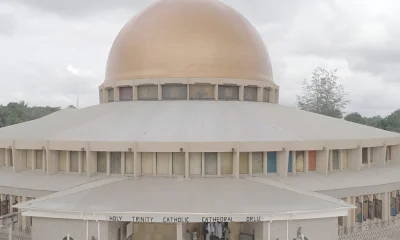

Bishop speaks on killing of boy by Catholic priest in South-east


‘You Should Not Resort To Disrespectful Politics’ – Afenifere, CUPP React As Obasanjo Slams NNPCL Over Invitation


Two Kebbi policemen killed in gun duel with bandits


‘You’re my friend,’ Tinubu tells Enugu gov during road unveiling
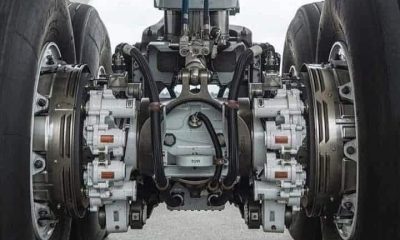

The wheels of an aircraft continue to spin and move immediately after takeoff.
Politics
“You’re doing a fantastic job, I don’t care about your Party -Tinubu to Mbah
Published
5 hours agoon
January 4, 2025By
Ekwutos Blog
He said the governor “is doing a fantastic job. I am glad that Enugu got a very good job tomorrow, today. I salute Peter Mbah for his commitment to development.
“You have built up a good team and I have reviewed a number of things with you in Abuja. You have encouraged me on the technological advancement of the state. The commitment you have from the private sector. I know your background.”
While waving politics aside, President Tinubu stressed that “the election is over and we have to move the nation forward. You have demonstrated that irrevocable commitment towards human development.
“I don’t care which party you come from. You are my friend. You are doing well and very focused. We must build this house called Nigeria to not just satisfy our immediate need, but our tomorrow too.
“That’s why the removal of the fuel subsidy was necessary. We can not spend the future of generation yet unborn in advance. Don’t bankrupt the nation before they’re born.”
“I am very proud of Nigeria. Mbah is proud of Nigeria. He is doing everything possible to provide security, attracting foreign investors, and other investors locally.
“There’s no better investment than the investment to secure lives. I saw those cars, the Distress Response Squad. It is the way to go.
“Please, continue to cooperate and collaborate with your son, brother and friend here, Mbah, who is really committed to push the development of Enugu State and be a good symbol of south eastern states,” he told the stakeholders.
Politics
‘You Should Not Resort To Disrespectful Politics’ – Afenifere, CUPP React As Obasanjo Slams NNPCL Over Invitation
Published
6 hours agoon
January 4, 2025By
Ekwutos Blog
Yoruba socio-political group, Afenifere and Coalition of United Political Parties (CUPP), have backed former President, Olusegun Obasanjo, over his response to the Nigerian National Petroleum Company Limited (NNPCL) following the invitation to tour the Port Harcourt Refinery and verify its current operational status.
The invitation comes in response to Obasanjo’s recent interview with Channels Television, where he referenced advice from Shell Petroleum Development Company (SPDC) indicating that the refinery might not function efficiently. SPDC, which was approached for equity participation in the refinery, reportedly raised concerns about corruption affecting its operations.
The former president also accused NNPCL of allegedly misleading Nigerians about the refinery’s performance.
Reacting, the Secretary-General of the Afenifere, Sola Ebiseni, faulted the NNPCL for inviting Obasanjo through newspaper publications after he rightly commented on the management deficiencies that had grounded Nigeria’s refineries for years.
Ebieni described the invitation as sheer arrogance and urged NNPCL to avoid resorting to disrespectful politics.
He said, “What former President Obasanjo said was quite illuminating about the way the affairs of the country have been or are being handled. He has been out of office since 2007, and until now, what we have seen is the epileptic performance of the refineries. So, it is sheer arrogance and disrespect for the NNPCL to claim they invited him to come and see.
“If you want to invite a statesman and former president like Obasanjo, no matter how you feel about the statement he made, you shouldn’t resort to disrespectful politics. If you believe that what he said does not reflect the current state of the plants, you should pay him a courtesy visit to present your views about the situation. But to go on the pages of newspapers to paint a picture of a liar—which is what the NNPCL’s action implies—leaves much to be desired.”
Also speaking to Punch, the National Secretary of the CUPP, Peter Ameh, said inviting Obasanjo through newspapers amounted to public ridicule and utter disrespect for his history, reputation, and record in the country.
Ameh claimed that NNPCL usually prioritises politics over issues affecting the lives of Nigerians.
He said, “You cannot invite Obasanjo on the pages of newspapers. Even the GMD cannot invite another company head in such a manner, not to mention someone who has served both as a General in the Nigerian Army and as a military Head of State, as well as a two-term democratically elected president of the country. The NNPCL must learn how to do things the right way and avoid politicising everything, as this is why our economy has nosedived.
“That is simply the NNPCL’s usual way of prioritising politics over issues that affect the lives of ordinary Nigerians. If Obasanjo says the refineries are not working after we have wasted about $2 billion on them, he is merely stating that we should have handed the plants over to private individuals to get them working optimally through private partnerships.”
Politics
‘You’re my friend,’ Tinubu tells Enugu gov during road unveiling
Published
8 hours agoon
January 4, 2025By
Ekwutos Blog
President Bola Tinubu, on Saturday, arrived in Enugu State on a working visit to unveil various projects by the state government.
His Special Assistant on Social Media, Dada Olusegun, disclosed this in a series of posts on X.com on Saturday.

Olusegun wrote, “President Bola Tinubu touched down at the Enugu airport on a working visit to commission various projects by the state government.
“You’re a good thinker, Mbah. You’re my friend. We can go places together. Building Nigeria. Building the future. Use technology to build. Promote investment. We must encourage the private sector to come into politics.”

Credit: X| DOlusegun

“You’re doing a fantastic job, I don’t care about your Party -Tinubu to Mbah

Bishop speaks on killing of boy by Catholic priest in South-east

‘You Should Not Resort To Disrespectful Politics’ – Afenifere, CUPP React As Obasanjo Slams NNPCL Over Invitation
Trending
- Politics11 months ago
Nigerian Senate passes Bill seeking the establishment of the South East Development Commission.

 Business11 months ago
Business11 months agoInflation hits record high of 29.90% on naira weakness

 Politics7 months ago
Politics7 months agoBREAKING: Federal Gov’t Offers To Pay Above N60,000, Reaches Agreement With Labour
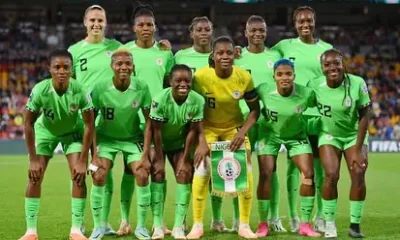
 SportsNews10 months ago
SportsNews10 months agoOlympic Qualifiers 2024: CAF Confirms Dates For Super Falcons Vs Banyana Banyana
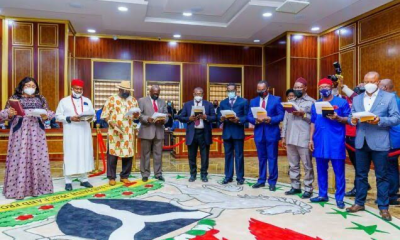
 Politics10 months ago
Politics10 months agoGovernor Hope Uzodinma’s New Cabinet In Imo: The Gainers, The Losers
- Entertainment11 months ago
American Singer Beyonce makes history as first Black woman to top country chart
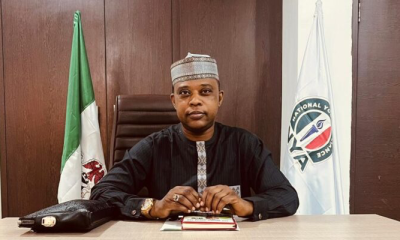
 Trending2 months ago
Trending2 months agoNYA demands release of ‘abducted’ Imo chairman, preaches good governance

 Politics7 months ago
Politics7 months agoBREAKING: Organized Labour suspends strike for one week.

